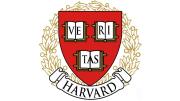Harvard today released its 2019 tax filings, covering fiscal year 2020 (July 1, 2019, through June 30, 2020), including information on the earnings of University leaders, and the accompanying Harvard Management Company (HMC) disclosure of senior employees’ compensation for calendar year 2019.
Compensation for Harvard’s Leaders
The annual report of the most highly compensated University officials and employees has a different look this year because of the effects of Harvard Business School’s voluntary retirement incentive program for tenured faculty members; three members who elected to participate received reported compensation of nearly $1.8 million each, reflecting their final salaries and immediate vesting of lump-sum payments. Those anomalies aside (and excluding compensation to other faculty members), the most highly compensated officials are the expected ones among Harvard leaders:
Lawrence S. Bacow, president, $1,046,906, plus other compensation of $177,983
Alan M. Garber, provost, $929,129, plus other compensation of $194,399 Corrected May 14, 2021, 4:45 p.m.: Because of a reporting error, Provost Garber's compensation as shown above was presented incorrectly. His compensation was $761,360, not $929,129; the figure for other compensation--chiefly the value of University housing assigned to the provost—is correct. We sincerely regret our error.
Brian Lee, vice president, alumni affairs and development, $809,382, plus other compensation of $64,695
Katie Lapp, executive vice president, $766,951, plus other compensation of $45,061
Various deans (Harvard Medical School, Harvard Business School, Faculty of Arts and Sciences) earned between $617,456 and $856,707. Other senior administrators (the vice president and chief financial officer, the vice president and chief information officer, the general counsel, the vice president for campus services, the vice president for human resources, and the University’s secretary) earned compensation in a range from $414,493 to $563,241. All these officials received additional compensation for medical, retirement, and other benefits.
Bacow’s compensation, for his first full calendar year of service as president, includes salary, benefits, and the value of University-supplied and -required housing ($118,160). Garber’s University housing is valued at $132,208. The Business School and Faculty of Arts and Sciences deans have residences provided, too—similarly reported as a nontaxable benefit.
The one surprise, perhaps, is the $699,590 compensation (plus benefits) to Drew Gilpin Faust, president emerita, who is now a University Professor. She also has a Harvard-supplied loan of $1 million ($917,000 outstanding) for construction of a home.
Updated May 14, 2021, 12:20 p.m.: Another surprise is the appearance on the list of David J. Malan, McKay professor of the practice of computer science and liaison to the chief technology officer. He is the creator and leader of the phenomenally popular Computer Science 50: “Introduction to Computer Science.” It is among the largest courses at Harvard; has been cloned at Yale; frequently leads enrollments, likely including of students paying to earn credentials and certificates for their work, on the edX platform (more than 2,000,000 enrollments); and has other iterations, including for business and M.B.A. learners. Malan appears with total reported compensation of $929,129, including about $382,000 of base compensation and $547,000 of other reportable compensation, presumably deriving from some of those other extensive activities.
Snapshot of a Changing HMC
At HMC—the University subsidiary which invests endowment and other financial assets—the data tell a story about institutional change. Calendar-year 2019 compensation was reported for the following HMC employees:
N. P. Narvekar, chief executive officer, $6,252,291
Sanjeev Daga, chief operating officer, $6,264,390
Richard Slocum, chief investment officer, $5,003,533
Robert Ettl, chief operating officer, $4,775,833
Adam Goldstein, generalist team, $4,375,455
Carlos Saravia, generalist team, $4,375,455
Four points merit elaboration.
First, Narvekar’s compensation appears nearly $1 million lower than in the prior-year report. In fact, his regular compensation—base pay, guaranteed bonus, and discretionary bonus—was roughly the same, but the prior-year figure reflected reimbursement for payments he forfeited when he left his position running Columbia University’s endowment to become HMC’s CEO.
Second, Daga’s reported compensation, which appears to exceed that of his boss, reflects a similar complication. He left Columbia and joined HMC in 2019; his compensation reported in today’s filing incorporates regular compensation plus contractural reimbursement for deferred payments forfeited when he departed Columbia. His initial contract also outlines future payments, which are reported in the tax filings as “estimated amount of other compensation” (some $3.6 million) but not actually received as compensation in this tax year.
Third, the compensation data show two COOs during the year. Robert Ettl, who became COO in 2008 and served as interim CEO in 2016, deferred his retirement, staying on at HMC during the organizational transitions being effected by Narvekar, and overlapping with Daga before finally retiring at the end of 2019.
Fourth, this year, Goldstein and Saravia, members of the generalist investment team, reappear on the list—but managers of specific asset classes no longer appear. Last year, two real-estate managers were among the most highly compensated HMC staff members, reflecting the organization in place in calendar year 2018. The real-estate operation was spun off (as were several other units) as part of Narvekar’s strategic reorganization of HMC to eliminate asset-class managers in favor of a smaller team of investment generalists (who are now paid not relative to results in any given asset class, but based on the longer-term performance of the endowment as a whole). In January, Narvekar announced that the transition had been completed in October 2020 (more than a year ahead of the five-year timeline projected at its inception in January 2017). The compensation data, in their way, tell the story of effecting that transition.
The HMC compensation figures reported today overlap the period including the second half of fiscal year 2019, when returns on endowment assets were 6.5 percent, and the first half of fiscal year 2020 (pre-pandemic), when returns were 7.3 percent.








